Classic Commentaries and Studies on the Biblical Apocrypha / Deuterocanon (42 vols.)
Digital Logos Edition
Overview
The Classic Commentaries and Studies on the Biblical Apocrypha collection presents many of the most important late-nineteenth- and early-twentieth-century studies on the Apocrypha and related literature. Thanks to such notable authors as W. O. E. Oesterley, R. H. Charles, Montague Rhodes James, and F. C. Burkitt, Classic Commentaries and Studies on the Biblical Apocrypha offers over 7,000 pages of interpretation, observation, translation, contextual history, and application on this important collection of ancient texts. The collection’s 42 volumes have had an enduring impact on Apocrypha studies, and this exceptional library provides easy access to a wealth of significant scholarship.
This collection is essential for students, scholars, pastors, historians, teachers of the Bible, and anyone else studying the Apocrypha. With Logos Bible Software, these volumes are completely searchable—Scripture passages appear on mouse-over and link to the Greek and Hebrew texts and English translations in your library. For scholarly work or personal Bible study, this makes these volumes more powerful and easier to access than ever before. With the advanced features of Logos Bible Software, you can perform comprehensive searches by topic or Scripture reference—finding, for example, every mention of “Messiah,” or “Ecclesiasticus 2:11.”

- In-depth studies of the books of 1 and 2 Esdras, Tobit, Judith, Wisdom, Ecclesiasticus, Baruch, 1 and 2 Maccabees, and many others
- Notable authors from a variety of backgrounds
- Completely searchable content linked to your favorite Bible translation and to other books in your library
- Title: Classic Commentaries and Studies on the Biblical Apocrypha
- Volumes: 42
- Pages: 7,910
- An Introduction to the Books of the Apocrypha, by W. O. E. Oesterley
- The Use of the Apocrypha in the Christian Church, by William Heaford Daubney
- The Three Additions to Daniel, by William Heaford Daubney
- The Apocrypha of the Book of Daniel, by Luke Howard
- The Uncanonical Jewish Books: A Short Introduction to the Apocrypha and Other Jewish Writings 200 B. C.–11 A. D., by William John Ferrar
- The Lost Apocrypha of the Old Testament, by Montague Rhodes James
- The Value of the Apocrypha, by Bernard J. Snell
- The Uncanonical and Apocryphal Scriptures, by W. R. Churton
- The First and Second Books of Esdras, by Archibald Duff
- Ezra Studies, by Charles C. Torrey
- The Missing Fragment of the Latin Translation of the Fourth Book of Ezra, by Robert L. Bensly
- The Apocalypse of Ezra, by G. H. Box
- Tobit and the Babylonian Apocryphal Writings, by A. H. Sayce
- The Book of Tobit, by Adolf Neubauer
- Two Unknown Hebrew Versions of Tobit, by Moses Gaster
- The Wisdom of Solomon, by W. O. E. Oesterley
- Psalms of the Pharisees, Commonly Called the Psalms of Solomon, by Herbert Edward Ryle, Montague Rhodes James
- Wisdom and the Jewish Apocryphal Writings, by W. B. Stevenson
- The Book of Wisdom: The Greek Text, the Latin Vulgate, and the Authorized English Version, by William J. Deane
- The Hebrew Text of Ben Sira, by Calvin Alexander McRae
- The Wisdom of Ben-Sira, by W. O. E. Oesterley
- The Original Hebrew of a Portion of Ecclesiasticus Together with the Early Versions and an English Translation, by A. E. Cowley, A. Neubauer
- The Wisdom of Ben Sira, by S. Schechter, C. Taylor
- The Originality of the Hebrew Text of Ben Sira in the Light of the Vocabulary and the Versions, by William Robert Taylor
- Ecclesiasticus, by N. Schmidt
- Ecclesiasticus, by Richard G. Moulton
- The Apocalypse of Baruch, by R. H. Charles, W. O. E. Oesterley
- The Principal Versions of Baruch, by R. R. Harwell
- The First and Second Books of Maccabees, by W. Fairweather
- The Third Book of Maccabees, by C. W. Emmet
- The Fourth Book of Maccabees, by C. W. Emmet
- The House of Seleucus, vol. 1, by Edwyn Robert Bevan
- The House of Seleucus, vol. 2, by Edwyn Robert Bevan
- The Age of the Maccabees, by A. W. Streane
- The Jewish Messiah: A Critical History of the Messianic Idea among the Jews from the Rise of the Maccabees to the Closing of the Talmud, by James Drummond
- Judas Maccabeus and the Jewish War of Independence, by Claude Reignier Conder
- The Doctrine of God in the Jewish Apocryphal and Apocalyptic Literature, by Henry J. Wicks, R. H. Charles
- The Ecclesiastical or Deutero-Canonical Books of the Old Testament Commonly Called The Apocrypha, by C. J. Ball
- The Wisdom of the Apocrypha , by C. E. Lawrence
- The Ethics of Jewish Apocryphal Literature, by M. Maldwyn Hughes
- Jewish and Christian Apocalypses, by F. C. Burkitt
- The Book of Esther in the Light of History, by Jacob Hoschander
This title is included in the following collections
You can save when you purchase this product as part of a collection.
Biblioteca Platinum Bilingual ...
$1,629.99$1,385.492025 Platinum Library
$1,499.99$1,499.992025 이중언어 플래티넘 서재
$2,149.99$1,827.492025 繁體中英雙語白金版圖書資料庫
$2,399.99$2,399.99
- $2,399.99
- $3,399.99$2,889.99
- $2,999.99
- $2,999.99
- $3,413.99
- $4,149.99$3,527.49
- $3,899.99
- $3,899.99
- $4,739.99$4,028.99
- $4,899.99$4,164.99
- $4,749.99
- $4,749.99
- $4,749.99
- $4,749.99
- $4,749.99
- $6,399.99$5,439.99
- $5,999.99
- $5,999.99
- $10,999.99
- $11,399.99
- $11,399.99
- $11,399.99
- $21,749.99
- $23,999.99
- $24,999.99
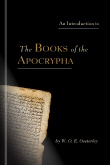
This introduction to the books of the Apocrypha consists of two parts. Part one, “Prolegomena to the Apocrypha,” aims to show the interest and importance of this body of literature from literary, historical, doctrinal, and New Testament–study points of view. Part two, “The Books of the Apocrypha,” is a book-by-book analysis in which Oesterley examines the title, date, contents, authorship, intended audience, original language, and more for each book of the Apocrypha.
W. O. E. Oesterley (1866–1950) was educated at Brighton College, Jesus College, and West Theological College. Oesterley went on to become Professor of Hebrew and Old Testament Studies at King's College, London. He is the author of numerous titles, including: The Wisdom of Jesus the Son of Sirach or Ecclesiasticus, The Epistle to Philemon, and The Doctrine of the Last Things: Jewish and Christian.
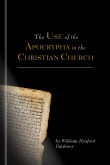
In The Use of the Apocrypha in the Christian Church, William Heaford Daubney argues that “the other books,” the apocryphal books, have far too long been neglected and that they deserve a more prominent place in everyday church worship. Daubney draws attention to their value in gaining a deeper understanding of the New Testament, the use made of them by the early Christian writers and by ancient Councils, their use during the Reformation, their influence on the Book of Common Prayer, and more.
A lucid setting forth of the Ancient and Modern use of the Apocrypha.
—Bookman
An admirable and interesting monograph . . . sure to interest clerical and other scholars.
—Churchwoman
For the general student of historical theology it is of importance.
—American Journal of Theology
He deserves our gratitude for the industry and care which has given us a very timely and useful book.
—Journal of Theological Studies
It is very valuable. It is first-hand work, and the author has judgment to select as well as industry to gather his facts.
—Expository Times
This is a scholarly yet popular work, which we cannot commend too highly. It is probably the best apologia of the Apocrypha which exists.
—Deuterocanonica
It is a learned essay, which argues that the Apocrypha should be more widely used . . . a view which cannot but gain ground when so devoutly and so eruditely supported as it is here.
—Scotsman
Mr. Daubney does good service in calling attention to the great value of the Apocrypha, and we hope that this very interesting book will remind Churchmen of the serious loss that results from its omission from Bibles.
—Pilot
William Heaford Daubney earned his BA and MA from Trinity College, Cambridge, and served as rector of Leasingham in the Diocese of Lincolnshire. He is also the author of The Three Additions to Daniel.
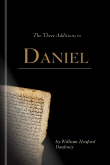
The three apocryphal portions of Daniel considered in this book have often been overlooked and understudied. The Song of the Three and the histories of Susanna and of Bel and the Dragon are most interesting memorials of the spirit of their time. And when looked at from the religious point of view, they are replete with valuable moral lessons. William Heaford Daubney dedicates an extensive study of each of these chapters, concluding each with practical lessons for homiletic and study purposes.
William Heaford Daubney earned his BA and MA from Trinity College, Cambridge, and served as rector of Leasingham in the Diocese of Lincolnshire. He is also the author of The Use of the Apocrypha in the Christian Church.

In The Apocrypha of the Book of Daniel, Luke Howard translates into English the Story of Susanna, the Prayer of Azariah with the Hymn of the Three Children, and the History of Bel and the Dragon from the Latin Vulgate. Attached to these translations is a short treatise on the history of the canonicity of these works.
Luke Howard was the author of numerous works, including Liber Ecclesiasticus: The Book of the Church, An Appeal to the Christian Public, and A Christian Manifesto.
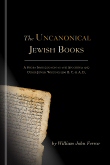
The object of Introduction is to provide a short account not only of the books in the Church Apocrypha, but of the other Jewish writings from 200 BC to AD 100, which should now be occupying the attention of those interested in the New Testament. For without some knowledge of the contemporary literature of the period, we lose the chief key to understanding the world to which Christ came, and the atmosphere in which the church was born. This survey gives a trustworthy impression of the general trend of literary activity during this period.
William John Ferrar is the author of numerous works, including The Assumption of Moses, Sacred Poems, The Saints of Cornwall, and The Early Christian Books.
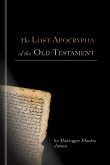
The object of this book is to collect, in a form convenient to English readers, the remains of some of the apocryphal writings connected with the Old Testament that have not survived in their entirety. Montague Rhodes James translates the various fragments and provides illuminating notes as well as an insightful introduction.
Information in English concerning the less know apocrypha and pseudepigrapha is scattered and not easily accessible. Yet they are historically of great importance and were influential upon Christian as well as Jewish doctrine. The present exceedingly useful little volume, by one of the two or three leading scholars in this branch, is therefore most welcome. The book is indispensible to the scholarly minister.
—The Homilietical Review
Montague Rhodes James (1862–1936) was provost of King’s College, Cambridge, from 1905 to 1918 and of Eton College from 1918 to 1936. Highly regarded for his fictional works, James also achieved wide circulation with his scholarly writing. Among the more widely published were The Apocryphal New Testament, The Apocalypse in Art, Apocrypha Anecdota, and The Biblical Antiquities of Philo.
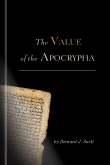
The Value of the Apocrypha comprises four introductory lectures on the Apocrypha. Along with a bibliographic list of books for further reading, Bernard J. Snell provides a table of prominent events to place the apocryphal books in context, as well as a list of parallelisms with the New Testament. Lectures included:
- Apocryphal Scriptures
- The Story of the Maccabees
- Apocryphal Legends and Prophecies
- The Wisdom Books
It is sane, scholarly, and written in a style of singular gracefulness. It possesses a distinctly literary flavor. Mr. Snell's defense of the Apocryphal books, as important for the history of religious ideas, as literature, and as works possessing present value for edification, is admirable.
—Review of Theology and Philosophy
Bernard J. Snell was minister of the Brixton Independent Church, one of main early-twentieth-century south London Nonconformist churches. His other works include The Value of the Old Testament, Sermons on Immortality and Other Subjects, The Virtue of Gladness and Other Sermons, and Sermons on the Boer War.
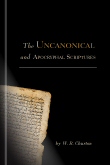
After providing an in-depth general introduction to the Apocrypha, W. R. Churton then provides introductions for each book and fragment before offering the English translation with notes and references. Churton argues that study of the Apocrypha leads to the conclusion that the Apocrypha have for their foundation a strong basis in the Hebrew Scriptures; thus, the Apocrypha confirm the traditions recorded by Josephus concerning the completion of the canon. Churton also provides a helpful index of passages from the canonical scriptures quoted or paraphrased in the Apocrypha.
We cordially recommend this book to all who are anxious to obtain, within wonderfully short compass, a really trustworthy guide to the Apocrypha.
—United Presbyterian Magazine
Churton, who has devoted many years of labor to its study, and has treated the subject with so much sobriety, critical insight, and thoroughness, that much light is thrown by these writings both on the Old and New Testaments. The laborious work of constructing a perfect test has been conscientiously done; each book has its own introduction; the notes are full and clear, and sometimes, what is evidently the result of the work of months, is embodied in a line or two. The marginal references must prove of incalculable value to students, and, on the whole, we must regard the work as one of the most laborious and scholarly additions recently made to our theological literature.
—British Quarterly Review
William Ralph Churton (1837–1897), the author of The Influence of the Septuagint Version of the Old Testament upon the Progress of Christianity, was an Anglican minister.
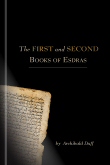
Before providing helpful notes and English translations of the first and second books of Esdras, Archibald Duff gives an in-depth introduction to the books. This introduction covers the books’ origin, authorship, and intended audience. Dedicated sections explain each book’s doctrine, and Duff lays out “The Christian’s Need for Esdras 1 and 2.”
One cannot fully understand the New Testament if ignorant of Jewish thought and history during the gap of centuries between the Old Testament and the New. Dr. Duff’s review of this period is illuminating.
—New Outlook
Archibald Duff (1845–1934) was a professor of Hebrew and Old Testament Theology at the Congregational United College in Bradford, England. His other works include History of Old Testament Criticism, The Theology and Ethics of the Hebrews, Old Testament Theology, and On the History of the Idea of Atonement among the Hebrews from the Time of Amos to the Liberation by Cyrus from the Babylonian Exile.
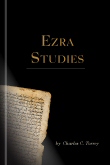
In Ezra Studies, Charles C. Torrey theorizes that the apocryphal 1 Esdras contains the genuine Septuagint translation of Chronicles–Ezra–Nehemiah, albeit in fragmentary form. He champions this theory in the following nine chapters:
- Portions of First Esdras and Nehemiah in the Syro-Hexaplar Version
- The Nature and Origin of “First Esdras”
- The Story of the Three Youths
- The Apparatus for the Textual Criticism of Chronicles–Ezra–Nehemiah
- The First Chapter of Ezra in Its Original Form and Setting
- The Aramaic Portion of Ezra
- The Chronicler as Editor and as Independent Narrator
- The Ezra Story in Its Original Sequence
- The Exile and the Restoration
Professor Torrey has the rare capacity of detaching himself wholly from preconceived and prevalent views with reference to a piece of literature and so formulating his own views with entire independence. No scholar hereafter can do any creditable work upon Chronicles, Ezra, and Nehemiah without taking full account of the labors of Professor Torrey.
—The Biblical World
Charles C. Torrey (1863–1956) taught Semitic languages at Andover Theological Seminary from 1892 to 1900 and at Yale University from 1900 to 1932. He also founded the American School of Archaeology in Jerusalem in 1901. His numerous scholarly works include The Jewish Foundation of Islam, The Chronicler’s History of Israel, The Second Isaiah: A New Interpretation, Original Prophecy, and Apocalypse of John.
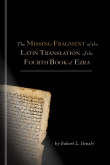
In the fourth book of Ezra (the second of Esdras in the Apocrypha) the incoherent transition from the 35th to the 36th verse of the seventh chapter has long been a stumbling block for readers of and commentators on the English Bible. In the beginning of the eighteenth century, an Arabic version was published that contained a long passage between the verses in question, restoring the connection. Soon after, various other versions were studied and translated, approaching the connection in much the same way. Robert L. Bensly tracked down the Amiens MS that once belonged to the Benedictine Abbey of Corbie, in the neighborhood of Amiens. The Missing Fragment of the Latin Translation of the Fourth Book of Ezra contains Bensly’s commentary on that much-sought-after Latin portion of Scripture..
Edited with true scholarly completeness.
—Westminster Review
Its editing is thoroughly careful and scholarly. You get between the covers of the book all that you want to know.
—The Publisher’s Circle
Robert L. Bensly (1863–1956) was Lord Almoner’s Professor of Arabic at Gonville and Caius College, Cambridge and examiner in the Hebrew text of the Old Testament at the University of London. His numerous works include The Fourth Book of Maccabees and Kindred Documents, The Harklean Version of the Epistle to the Hebrews, and The Four Gospels in Syriac, Transcribed from the Sinaitic Palimpsest.
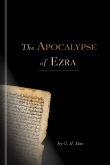
In The Apocalypse of Ezra, G. H. Box provides an English translation and illuminating notes on the Syriac text of 2 Esdras 3–14. In the introduction, he covers the title, varying ancient versions, and the special importance of the book.
The appended notes are of considerable interest.
—Classical Review
Mr. Box may be congratulated on the painstaking labor with which he has addressed himself to the exposition of so difficult and so interesting a book as The Ezra Apocalypse. The commentary is replete with textual discussions and with a wealth of illustrations from the cognate literature.
—Jewish Quarterly Review
G. H. Box (1869–1933) was rector of Sutton Sandy, Bedfordshire and a lecturer of theology at the University of Oxford. He is the author of numerous works, including The Spiritual Teaching and Value of the Jewish Prayer Book, The Virgin Birth of Jesus, The Apocalypse of Abraham, and Introduction to the Canonical Books of the Old Testament.
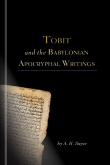
In Tobit and the Babylonian Apocryphal Writings, A. H. Sayce provides notes and the English translations for the Books of Tobit, Judith, Song of the Three Holy Children, Story of Susanna, Bel and the Dragon, and the Prayer of Monasses. In the introduction, he covers topics such as the Babylonian love for ceremonial law, the prophets, the belief in magic, the Haggadah and historical novel, the uses of the Haggadah, and more.
The introduction and the notes are full and offer all the collateral evidence that the average reader could need. The student of ancient history and of the Bible will find this apocryphal scripture of great value in corroborating and rounding out the information obtained elsewhere.
—Public Opinion
A. H. Sayce (1846–1933) was educated at Queens College, Oxford, before becoming a professor of philology at the University of Oxford. Sayce later went on to become the chair of Assyriology. A. H. Sayce is notable for his many works on Assyriology including An Assyrian Grammar, Lectures upon the Assyrian Language, Assyria: Its Princes, Priests, and People, and Social Life Among the Assyrians and Babylonians.
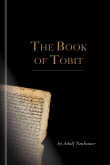
In The Book of Tobit, Adolf Neubauer provides the originals and the English translations of the Chaldee and Hebrew texts of the book of Tobit for comparison. Before the translations, Neubauer provides an extensive introduction that discusses how he acquired the Chaldee manuscript, why it’s important to compare the various translations, and why Jerome’s original Chaldee translation could be faulty.
Adolf Neubauer (1831–1907) was a librarian at the Bodleian Library and reader in Rabbinic Hebrew at Oxford University. His numerous works include La Géographie du Talmud, Jewish Interpretations of the Fifty-third Chapter of Isaiah, and Medieval Jewish Chronicles. He has the honor of being the first scholar to discover a fragment of the Hebrew text of Ben Sira.
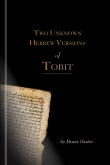
Of all the Apocrypha of the Old Testament, the legend of Tobit alone may be said to have come down to us in the greatest variety of texts and translations. M. Gaster delivers the original Hebrew and English translations for two previously unknown versions of the book of Tobit, plus a valuable introduction to the text.
Moses Gaster (1856–1939) was educated at the University of Leipzig and the Jewish Seminary of Breslau. He was a lecturer on Romanian language and literature at the University of Bucharest from 1881 to 1885 before moving to England. Gaster, a prolific translator and collector of manuscripts, was appointed one of the six members of the honorary board of trustees of the Yiddish Scientific Institute. His numerous works include Jewish Folk-Lore in the Middle Ages, Studies and Texts in Folklore, Magic, Medieval Romance, Hebrew Apocrypha and Samaritan Archaeology, and Samaritan Oral Law and Ancient Traditions.
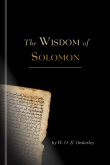
In the introduction to The Wisdom of Solomon, W. O. E. Oesterley covers the title, authorship and composition, the date of the book, the connection between the Wisdom Books and the Pauline epistles, and more. Oesterley then provides the English translation along with pertinent notes.
W. O. E. Oesterley (1866–1950) was educated at Brighton College, Jesus College, and West Theological College. Oesterley went on to become a professor of Hebrew and Old Testament Studies at King’s College, London. He is the author of many titles, including The Wisdom of Jesus the Son of Sirach or Ecclesiasticus, The Epistle to Philemon, and The Doctrine of the Last Things: Jewish and Christian.
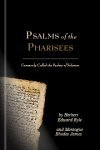
The Psalms bearing the name of Solomon form an important link between the Old Testament and the New and precede the Christian era only by a short interval. Before giving the Greek text and the English translation of the Psalms of Solomon for comparison, Herbert Edward Ryle and Montague Rhodes James provide the following 11 introductory chapters:
- Editions
- History of the Book
- The MSS
- Date and Authorship
- Jewish Parties and the Religious Thought of the Psalms of Solomon
- The Idea of the Messiah in the Psalms of Solomon
- Place of Writing, Authorship, Purpose, Style, and Title of the Psalms of Solomon
- The Psalms of Solomon and Jewish Literature
- The Possibility of a Hebrew Original
- The Character of the Greek Translation
- The Date of the Greek Translation
A valuable contribution to English biblical and theological literature.
—The Academy
Montague Rhodes James (1862–1936) was provost of King’s College, Cambridge, from 1905 to 1918 and of Eton College from 1918 to 1936. Highly regarded for his fictional works, James also achieved wide circulation with his scholarly writings. Among the more widely published were The Apocryphal New Testament, The Apocalypse in Art, Apocrypha Anecdota, and The Biblical Antiquities of Philo.
Herbert Edward Ryle was dean of Westminster, bishop of Exeter and Winchester, and a fellow of the British Academy.
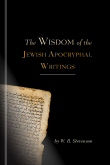
In Wisdom and the Jewish Apocryphal Writings, W. B. Stevenson provides introductions, notes, and English translations for the books of Baruch and Esther and the Wisdom of Solomon. In the introduction, he covers the contents in general, date, authorship, the original language, and much more.
Everything that an English reader needs to appreciate these ancient writings is here in the most accessible and attractive form.
—London Quarterly Review
W. B. Stevenson (1869–1954) was professor of Hebrew and Semitic languages at the University of Glasgow from 1907 to 1937. He was president of the Glasgow University Oriental Society for more than 30 years. His numerous works include The Crusaders in the East, Grammar of Palestinian Jewish Aramaic, and Critical Notes on the Hebrew Poem of Job.
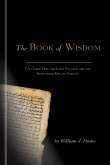
The Book of Wisdom begins with an in-depth prolegomena covering the progress of Greek philosophy, Jewish-Alexandrian philosophy, the book’s influence on the theology of the New Testament, and more. William J. Deane then provides the Greek text of the Wisdom of Solomon with a critical apparatus, along with the English translation and text of the Latin Vulgate for side-by-side comparison. After the three versions, Deane includes over 100 pages of commentary on the text, with the aim “to give the plain, grammatical, and historical meaning of each passage, illustrating it by references to the writings of Philo, Josephus, the Alexandrian writers and early Fathers.” The book also includes Greek, Latin, and English indexes.
His commentary is scholarly and judicious throughout; his introductory sketch of the progress of Greek philosophy as bearing on Jewish-Alexandrine speculations is an admirable specimen of careful criticism and fairly-balance judgment.
—British and Foreign Evangelical Review
This is a work of great labor and industry, and one which, it may be hoped, will be a permanent boon to biblical students, as well as a means of directing attention to the most interesting portion of the Apocrypha.
—Church Quarterly Review
Mr. Deane’s commentary is very full and scholar-like, seldom missing any point, whether of criticism, grammar, or interpretation, which needs to be elucidated.
—Saturday Review of Politics
Dr. Westcott, writing nearly twenty years ago in Smith’s Bible Dictionary, expressed his regret that there was no good English edition of the Book of Wisdom. Fortunately, this want has been at last supplied by Mr. Deane; for there can be no doubt that the edition before us is the result of much patient labor and that it bears throughout the stamp of mature scholarship and sound discretion.
—Dublin Review
William J. Deane was rector of Ashen, Essex, and taught at Oriel College, Oxford. A prolific writer, his numerous works include Pseudepigrapha, Abraham: His Life and Times, Joshua: His Life and Times, David: His Life and Times, Samuel and Saul: Their Life and Times, as well as commentaries on Ecclesiastes, Amos, Matthew, and Proverbs.
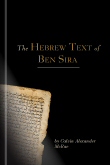
In The Hebrew Text of Ben Sira, Calvin Alexander McRae provides the Hebrew text and English translation of Ecclesiasticus 39:15 to 43:33 with critical notes.
Calvin Alexander McRae was born in 1874 in the village of Erin, Ontario. While earning his MA, he studied Hebrew, Aramaic, Syriac, Arabic, and Assyrian, as well as these languages’ respective literatures. He also served as lecturer in Hebrew at the University of Trinity College, Toronto. The Hebrew Text of Ben Sira is the thesis he submitted to the University of Toronto for a Doctor of Philosophy.
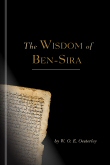
In the introduction to The Wisdom of Ben-Sira, W. O. E. Oesterley covers the book’s title, authorship, composition, date, and more. Oesterley highlights both the importance of the book for learning about the social life and conditions of the Jews in Palestine during the two centuries immediately preceding the Christian era and the insight it affords into Jewish doctrinal teaching at this period. Oesterley then provides the English translation along with pertinent notes.
The discovery, in the Cairo Synagogue, of Mss. fragments, which enable us to reconstitute about three-quarters of the Hebrew text of Ecclesiasticus has made imperative a new translation of this important book. We are indeed fortunate in having this work done by Dr. Oesterley.
—New American Church Monthly
W. O. E. Oesterley (1866–1950 )was educated at Brighton College, Jesus College, and West Theological College. Oesterley went on to become a professor of Hebrew and Old Testament Studies at King’s College, London. He is the author of numerous titles, including The Wisdom of Jesus the Son of Sirach or Ecclesiasticus, The Epistle to Philemon, and The Doctrine of the Last Things: Jewish and Christian.
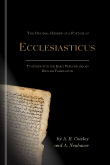
Authors and translators A. E. Cowley and Adolf Neubauer tackle the difficult task of translating newly discovered leafs that form part of the original Hebrew text of Ecclesiasticus. The authors provide an introduction to the history of the text, a grouping of Ben Sira’s proverbs preserved in Talmudic and Rabbinic literature, and a glossary. The volume then contains the Hebrew text with the Old Latin, Greek, and Syriac versions along with the English translation for side-by-side comparison.
Claredon Press has done great service to students by this publication of the Hebrew original of the fragment of Ecclesiasticus lately discovered in the East.
—London Quarterly Review
Adolf Neubauer (1831–1907) was a librarian at the Bodleian Library and reader in Rabbinic Hebrew at Oxford University. His numerous works include La Géographie du Talmud, Jewish Interpretations of the Fifty-third Chapter of Isaiah, and Medieval Jewish Chronicles.
A. E. Cowley (1861–1931) was Bodleian Librarian at the University of Oxford for over 10 years. He is known for revising and translating from German to English the second edition of Gesenius’ Hebrew Grammar, one of the definitive reference works for the study of biblical Hebrew.
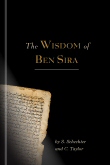
Ben Sira’s book is of unique interest to the scholar and the theologian as a Hebrew work of nearly known date that links the Old Testament and the Rabbinic writings. The first step to its right appreciation is to note its discursive use of the ancient Scriptures, and the author’s free way of adapting their thoughts and phrases to his purposes. The Hebrew restores allusions that were lost or obscured in the other versions.
In the year following the publication of Adolf Neubauer and A. E. Cowley’s newly discovered leaves of Ecclesiasticus, S. Schechter found an additional 11 leaves that added to the growing collection of original Hebrew texts. In The Wisdom of Ben Sira, S. Schechter provides the Hebrew text, notes on the text, and an in-depth introduction. C. Taylor provides the English translation, footnotes, and a helpful appendix.
To Professor Schechter belongs the honor of identifying the very first Fragment found. But he has earned more than the praise of mere discovery. He has studied the texts with penetration, has illustrated them with fullness of learning, and has discussed them with critical insight.
—Jewish Quarterly Review
Solomon Schechter (1847–1915) was president of the Jewish Theological Seminary of America and founder and president of the United Synagogue of America. His numerous works include Some Aspects of Rabbinic Theology, Studies in Judaism, and Seminary Addresses and Other Papers.
Charles Taylor (1840–1908) was educated at King’s College, London, and St. John’s College, Cambridge. His numerous works include Sayings of the Jewish Fathers, Teaching of the Twelve Apostles, and Essay on the Theology of the Didache.
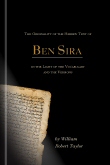
William Robert Taylor divides his thesis—that the Hebrew text of Ben Sira is the genuine, original text—into three parts:
- An Examination of the Vocabulary of Ben Sira cc X-XL
- Evidence of the Vocabulary
- Evidence of the Versions
William Robert Taylor was born in Port Dencer, Ontario, in 1882. In 1909, he was appointed chair of Old Testament language and literature in Westminster Hall, Vancouver.
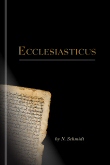
In Ecclesiasticus, N. Schmidt provides an introduction, notes, and the English translation of Ecclesiasticus. In the introduction, he covers the division and contents in general, the title, the Hebrew text and various translations, the date and authorship, the literary character, and much more.
Dr. N. Schmidt is the editor of Ecclesiasticus, and his introduction and notes supply all that a reader needs to understand ‘the most complete textbook on morals preserved from Hebrew antiquity.’
—London Quarterly
Nathaniel Schmidt (1862–1939) was professor of Semitic languages and literatures at Colgate University from 1888 to 1896 and later held the same position at Cornell University from 1896 to 1932. His numerous works include The Coming Religion, The Messages of the Poets, The Original Language of the Parables of Enoch, and Biblical Criticism and Theological Belief.
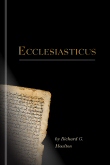
Like the rest of the Apocrypha, Ecclesiasticus stands between the Old and New Testaments. Like the whole of the Books of Wisdom, it is intermediate between sacred and secular literature. In common with two other of these wisdom books, it mediates between purely Jewish thought and the spirit of the external world that gradually leavened that thought; in the case of Ecclesiasticus, what there is of external influence is, on the explicit authority of the preface, to be put down to that Alexandrian literary circle that was the great link between oriental and Western, between ancient and modern. In a yet more important sense, the book has application: so far as biblical philosophy can be presented as a thing of development, Ecclesiasticus holds in that development a middle place.
Richard G. Moulton provides an English translation of Ecclesiasticus, plus an extensive introduction to the book and a valuable commentary.
Richard G. Moulton (1849–1924) was professor of English Literature at the University of Chicago. Moulton was born in England and educated at Cambridge as a lawyer before immigrating to America, later receiving a PhD from the University of Pennsylvania. He is the author of over 30 titles, including Shakespeare as a Dramatic Artist, The Literary Study of the Bible, World Literature and Its Place in General Culture, and The Ancient Classical Drama.
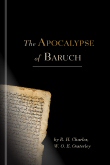
In his introduction to The Apocalypse of Baruch, W. O. E. Oesterley covers the book’s title, authorship and composition, date, language and contents, and more. He also includes two special sections of study, the “Importance of the Book for the Study of Christian Origins” and “Jewish and Christian Teachings.” R. H. Charles then provides the complete English translation of the Apocalypse of Baruch.
W. O. E. Oesterley (1866–1950) was educated at Brighton College, Jesus College, and West Theological College. Oesterley went on to become professor of Hebrew and Old Testament Studies at King’s College, London. He is the author of many titles, including The Wisdom of Jesus the Son of Sirach or Ecclesiasticus, The Epistle to Philemon, and The Doctrine of the Last Things: Jewish and Christian.
R. H. Charles is recognized as one of the leading figures in Enoch scholarship, and his masterly translation remains the standard edition of the text in English. An authority on apocalyptic literature, he became canon at Westminster Abbey in 1913 and an archdeacon in 1919. Charles is also the author of Eschatology, Between the Old and New Testaments, and The Apocrypha and Pseudepigrapha of the Old Testament.
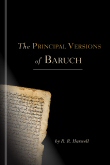
The purpose of The Principal Versions of Baruch is to show conclusively that the whole book was written originally in Hebrew. Harwell shows that the Greek version, which was made by a single hand at an early date, has suffered much variation and corruption, especially in the prose part. The Old Syriac version was originally made from the Greek. Two Latin versions of the book were made: the first of these from the pre-Hexaplaric Greek, the second a later close rendering of the standard Greet text. Harwell also shows that a pre-Christian date for the Greek translation of Baruch is proved by the identity of its author with that of the Greek of Jeremiah of which was a part.
R. R. Harwell earned his BA from Hampden-Sidney College in 1897 and his BD in Semitic languages from Yale University in 1903.
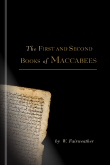
In this packed yet succinct volume, W. Fairweather provides introductions, notes, and English translations for the first and second books of Maccabees. In the introduction, he covers the name “Macabee,” the events leading up to the Maccabean revolt, and the wars of the Maccabees, plus the contents and style of the book, its original language and unity, its date and authorship, its historical credibility, and much more. He also provides a table showing the genealogy and reigns of the Syrian kings during the second century BC.
W. Fairweather is the author of numerous works, including 1 Maccabees in the Cambridge Bible for Schools and Colleges, Among the Mystics, Origen and Greek Patristic Theology, and The Background of the Gospels.
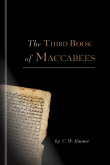
The third book of Maccabees tells the story of Ptolemy IV Philopator’s persecution of the Jews and his conversion, through divine intervention, to their protector. Before providing the English translation with notes, Emmet covers the book’s contents, purpose, date and origin, historical basis, and much more.
The translator has prefixed to each of these translations an introduction that gives proof of ripe scholarship and of well directed research. All lovers of Apocrypha will welcome this little volume.
—New American Church Monthly
Cyril W. Emmet (1820–1903) was vicar of West Hendred, located in South Oxfordshire. He published numerous works, including The Eschatological Question in the Gospels, Conscience, Creeds and Critics: A Plea for Liberty of Criticism within the Church of England, and The Fourth Book of Maccabees.
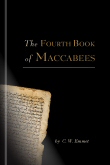
The fourth book of Maccabees tells the martyrdom story of Eleazer and the Maccabean youths under Antiochus IV Epiphanes. Before providing the English translation with notes, Emmet covers the book’s contents, purpose, date and origin, historical basis, and much more.
Cyril W. Emmet (1820–1903) was vicar of West Hendred, located in South Oxfordshire. He published numerous works, including The Eschatological Question in the Gospels, Conscience, Creeds and Critics: A Plea for Liberty of Criticism within the Church of England, and The Third Book of Maccabees.
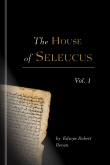
The two-volume House of Seleucus treats a phase of Greek civilization of immense importance: the Greco-Macedonian rule in the East after Alexander the Great. It deals with the dynasty that played the principal part in the Greek East—that founded by the Macedonian Seleucus. Edwyn Robert Bevan’s magnum opus shines light on the conflict between Hellenism and Judaism during this dynasty. Volume one includes the following fifteen chapters:
- Hellenism in the East
- Physical Environment
- Perdiccas
- Events in the East 321–326
- Seleucus Conquers the East
- From Ipsus to the Death of Seleucus
- The Problems of Asia Minor
- Antiochus I
- Antiochus II
- Seleucus II
- Syria
- Babylonia
- Iran
- India
- The First Years of Antiochus III
It is seldom that the critic welcomes a work of so much ambition and achivement from a new historian. The first seious attempt made in modern times to treat the Seleucid realm as a whole, apart from the othe Macedonian kingdoms. The result is astonishingly successful. As an authority on authorities Mr. Bevan's book will long retain a very high value.
—Times
Such writing as this makes us hail in Mr. Bevan the appearance of a new historian fit to stand beside the best of the French or German specialists.
—Athenaeum
The House of Seleucus should undoubtedly be read by all who take an interest in ancient history.
—Saturday Review
A book which will be indispensible to all who do not make Alexander's death the limit of their interest in Hellenic things. A work of great and lasting interest.
—Cambridge Review
Edwyn Robert Bevan (1870–1943) taught at King’s College, London, and was awarded an honorary doctorate from St. Andrews in 1922 and an honorary DLitt from Oxford in 1923. His numerous works include Stoics and Skeptics, Later Greek Religion, Holy Images: An Inquiry into Idolatry and Image-Worship in Ancient Paganism and in Christianity, and the Gifford Lectures of 1938, published as Symbolism and Belief.
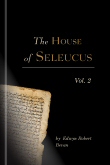
The two-volume House of Seleucus treats a phase of Greek civilization of immense importance: the Greco-Macedonian rule in the East after Alexander the Great. It deals with the dynasty that played the principal part in the Greek East—that founded by the Macedonian Seleucus. Edwyn Robert Bevan’s magnum opus shines light on the conflict between Hellenism and Judaism during this dynasty. Volume two includes the following fifteen chapters:
- Archaeus
- The Reconquest of the East
- The Conquest of Palestine
- The Advance in the West
- The War in Greece
- The War in Asia
- The Interval of Peace
- Antiochus IV and the Conquest of Egypt
- Antiochus the God Manifest
- Antiochus and the Jews
- Antiochus V Eupator and the Administration of Lysias
- Demetrius the Savior
- Alexander I and the Prolemaic Ascendancy
- The Cretan Tyranny
- Antiochus Sidetes
- The Last Convulsions
- Government, Court, and Army
Edwyn Robert Bevan (1870–1943) taught at King’s College, London, and was awarded an honorary doctorate from St. Andrews in 1922 and an honorary DLitt from Oxford in 1923. His numerous works include Stoics and Skeptics, Later Greek Religion, Holy Images: An Inquiry into Idolatry and Image-Worship in Ancient Paganism and in Christianity, and the Gifford Lectures of 1938, published as Symbolism and Belief.
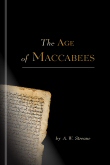
The Age of the Maccabees covers the history of the period from the return of the Jews (in accordance with the decree of Cyrus) to the accession of Herod the Great (37 BC). A. W. Streane explores the social, political, and religious condition of the Jewish people during this period and focuses on an examination of the literature, apocryphal and other, of the time. A special chapter is given to the origin of the Septuagint. Separately, Streane also treats various questions that this period involves, such as the position of the Assideans, the existence of Maccabean Psalms, and the date of the Book of Daniel.
This work is especially valuable for its comments on the apocryphal books and the conditions and circumstances attending their composition.
—American Monthly Review
Offers important assistance to the student of the problems of the formation of the sacred canon.
—Church Quarterly Review
Excellently done, and can be recommended to the Bible students to whom it is specially addressed.
—The Academy
A scholarly survey of the history and literature of the Jews from the accession of Antiochus the Great to the taking of Jerusalem by Herod.
—The Literary World
It is not only exact and scholarly, but it is also pre-eminently readable.
—The Record
A handbook of great value to the student.
—The Scotsman
A. W. Streane (1844–1915) was educated at Trinity College, Dublin, and Emmanuel College, Cambridge. He was a fellow of Divinity and Hebrew at Corpus Christi College, Cambridge. His works include The Double Text of Jeremiah and three volumes from the Cambridge Bible for Schools and Colleges, Jeremiah & Lamentations, Esther, and Leviticus.
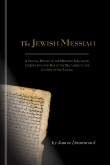
The object of The Jewish Messiah is twofold. It endeavors to exhibit the doctrine concerning the Messiah as it was held among the Jews in the centuries during which Christianity appeared; and, as subsidiary to this main purpose, it seeks to introduce the English reader to the apocalyptic and kindred literature. He divides his study into two parts: “Sources” and “History.” Before diving into the historical idea of the Messiah, Drummond offers a survey of the Sibylline Oracles, the Book of Enoch, the Assumption of Moses, the fourth book of Ezra, the Apocalypse of Baruch, the Psalms of Solomon, and more, plus valuable discussion of the Targums, the Talmud, and other rabbinical works.
James Drummond (1835–1918) was principal of Manchester New College, Oxford, from 1885 to 1906. His numerous books include Spiritual Religion, Introduction to the Study of Theology, The Character and Authorship of the Fourth Gospel, and The Epistle of St. Paul to the Galatians Explained and Illustrated.
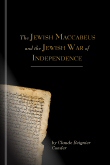
The story of the life of Judas Maccabeus forms one of the most important episodes in Jewish history, if only because it explains how the nation first developed the character that defined it as Christianity was given to the world. The public career of Judas extends only over eight years, and the work he commenced was left to his brothers and their descendants to carry out; yet the name of Judas stands out more distinctly than that of any other leader of the age. In Judas Maccabeus and the Jewish War of Independence, Conder narrates the bare facts of the short career of Judas, and also gives a sketch of the gradual development of the nation during the period of independence, from Ezra to the Herodian age, with some account of Maccabean habits of life, manners, and religious contests and tendencies, and with an estimate of the true value of the achievements of Judas as influencing the later history of the Jews. From a study of the condition and habits of the nation, the reader can obtain a clear view of the immediate causes of the revolt, and the real importance of the struggle will be seen to lie in the development of the national character and religion, which was the result of the freedom obtained by the efforts of Judas.
He sees clearly and broadly into national life in its varied elements, and pleasantly and forcibly expresses his conclusions. His pen gives fresh interest, and in many respects a new meaning to the times and new views of the leading actors in them. The book will be relished by Bible students.
—Baptist Review
He throws himself with an intelligent enthusiasm into his subject. He appreciates the unselfish greatness of Judas—the romantic daring which marked the beginning of the Jewish revolt, the consummate ability with which Judas selected his positions and won his victories against overwhelming odds, and then his tragic death which closed his heroic struggle for independence with apparent defeat, and kept him from seeing the glorious results which his ability, his prudence, his piety, no less than his dauntless courage had secured for his nation. The battles live in Mr. Conder’s pages.
—Dublin Review
It is a pleasure to notice in a book of so small compass the evident and successful effort to seize upon just those points which will leave in the reader’s mind a clear and adequate picture of the whole movement described. The tone of the work throughout dignified and scholarly; the style is easy and as it were picturesque in spite of itself.
—International Review
Claude Reignier Conder (1848–1910) was educated at University College, London, and served as a surveyor in Palestine for the Corps of Royal Engineers for several years. His works include Tent Work in Palestine, Memoires: The Survey of Western and Eastern Palestine, and Altaic Hieroglyphs and Hittite Inscriptions.
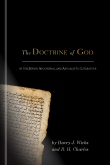
Before diving into the doctrine of God as found in the Jewish apocryphal and apocalyptic literature, Henry J. Wicks gives a valuable introduction to the material, which he analyzes in three parts: “The Transcendence of God,” “The Justice of God,” and “The Grace of God.” The works covered include Ecclesiasticus, Tobit, the Ethiopic Enoch, Jubilees, the Sibylline Oracles, 1 Maccabees, the Psalms of Solomon, Judith, the additions to Daniel, the Epistle of Jeremy, the Wisdom of Solomon, the Book of Baruch, and many others.
Henry J. Wicks was a student at the University of London, and The Doctrine of God in the Jewish Apocryphal and Apocalyptic Literature—his doctoral thesis—was published at the insistence of R. H. Charles for its important contribution to apocryphal studies.
R. H. Charles is recognized as one of the leading figures in Enoch scholarship, and his masterly translation remains the standard edition of the text in English. An authority on apocalyptic literature, be became canon at Westminster Abbey in 1913 and an archdeacon in 1919. Charles is also the author of Eschatology, Between the Old and New Testaments, and The Apocrypha and Pseudepigrapha of the Old Testament.
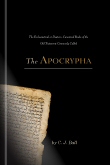
In The Ecclesiastical or Deutero-Canonical Books of the Old Testament Commonly Called the Apocrypha, C. J. Ball provides notes and commentary for all of the books of the Apocrypha found in the Coverdale Bible. In preparing this edition of the Apocrypha, Ball has removed stumbling blocks presented by faulty readings and defective renderings by diligently using the best modern critical editions of texts and by comparing the views of various commentators, old and new.
Charles James Ball (1851–1924) was a lecturer in Assyriology at Oxford and the author of numerous works, including The Book of Job: A Revised Text and Version, The Prophecies of Jeremiah, and Light from the East.
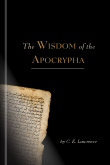
The Wisdom of the Apocrypha
- Author: C. E. Lawrence
- Publisher: John Murray
- Publication Date: 1910
- Pages: 323
In The Wisdom of the Apocrypha, C. E. Lawrence provides a valuable introduction to and English translation of the Wisdom of Solomon and Ecclesiasticus. Even though these books are noncanonical, Lawrence nevertheless champions their importance in that they carry on the literature, and generally illustrate the ethical attitude, of the Jews during the gap of years which lapsed between the last books of the Old Testament and the Synoptic Gospels. For our purposes they have a necessary message. The truths they tell, the criticism of men and things they make, are as applicable to modern life as are the Proverbs. They spur, chide, stimulate, promise reward to, and inspire today’s readers as they did the people of the times during which they were written.
C. E. Lawrence (1870–1940) was the author of numerous works of Christian fiction, such as The Trial of Man, Pilgrimage, and The Hour of Prospero. He was the editor of Quarterly Review from 1922 to 1928.
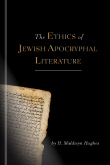
In The Ethics of Jewish Apocryphal Literature, H. Maldwyn Hughes mines the Apocrypha and various Pseudepigrapha to extract ideas on various ethical topics. First, Hughes begins with a topic, such as free will or moral evil. Then, the topic is divided between literature from the second century BC, first century BC, or first century AD. The literature is further divided by its Palestinian or its Alexandrian origins. Hughes provides an introduction to each topic, as well as to each piece of literature examined.
Henry Maldwyn Hughes (1875–1940) earned his DD from London University and was ordained as a Wesleyan minister in 1896. His numerous works include Wesley and Whitefield, Faith and Progress, and The Christian Idea of God.
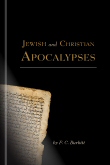
Jewish and Christian Apocalypses contains lectures from the Schweich Lecture Series from 1913, revised and enlarged by F. C. Burkitt. In the lectures, Burkitt expounds on what he believes is the fundamental idea that underlies the great series of Jewish apocalypses, viz. the idea of the imminent Judgment to Come, and further, to exhibit this idea in connection with what he believes to be both its true historical setting and the ultimate cause of its manifestation. “That which gives the Apocalypses vitality is the great struggle between Religion and Civilization, of which the Maccabean Martyrs are the symbol.” Burkitt explores these ideas in the following lectures:
- The Apocalyptic Idea
- The Book of Enoch
- The Minor Jewish Apocalypses
- Early Christian Apocalyptic Writing
- Appendix 1: On the Greek Text of Enoch
- Appendix 2: On the Martyrdom of Isaiah
- Appendix 3: On Some Other Kinds of Apocalypses
For the uninitiated it gives a very useful summary of apocalyptic books and apocalyptic teaching, and, for the specialist, ingenious solutions of textual and other problems, especially in the appendices. The name of the author is sufficient guarantee for good work.
—Review of Theology and Philosophy
Francis Crawford Burkitt (1864–1935) was Norris Professor of Divinity at the University of Cambridge from 1905 to 1934. His academic focus was the reception of the New Testament and textual criticism. He is known both for the critical stance he took on the notion of the Caesarean text type proposed by B. H. Streeter and for his standard edition of Curetonianus, one of two known existing Old Syriac New Testament manuscripts.
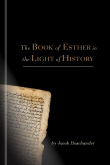
The object of this volume is to interpret the Book of Esther from the historical point of view and to show the historical origin of the Festival of Purim. In his fresh examination of the Book of Esther, Jacob Hoschander thoroughly discusses the additional six chapters the canonicity of which scholars are still in debate over.
Jacob Hoschander was instructor in cognate languages at the Dropsie College for Hebrew and Cognate Learning. His other works include Priests and Prophets and Survey of Biblical Literature.
Reviews
18 ratings

SEONGJAE YEO
10/5/2019
Eugene
9/2/2017

Unix
1/12/2016

M. David Johnson
3/27/2015
Derek Anderson
11/11/2014

David Sloan
8/26/2014
AeliusCicero
6/19/2014

David Leslie Bond
11/20/2013

Larry Proffitt (I
11/5/2013
James Mills Jr.
10/29/2013